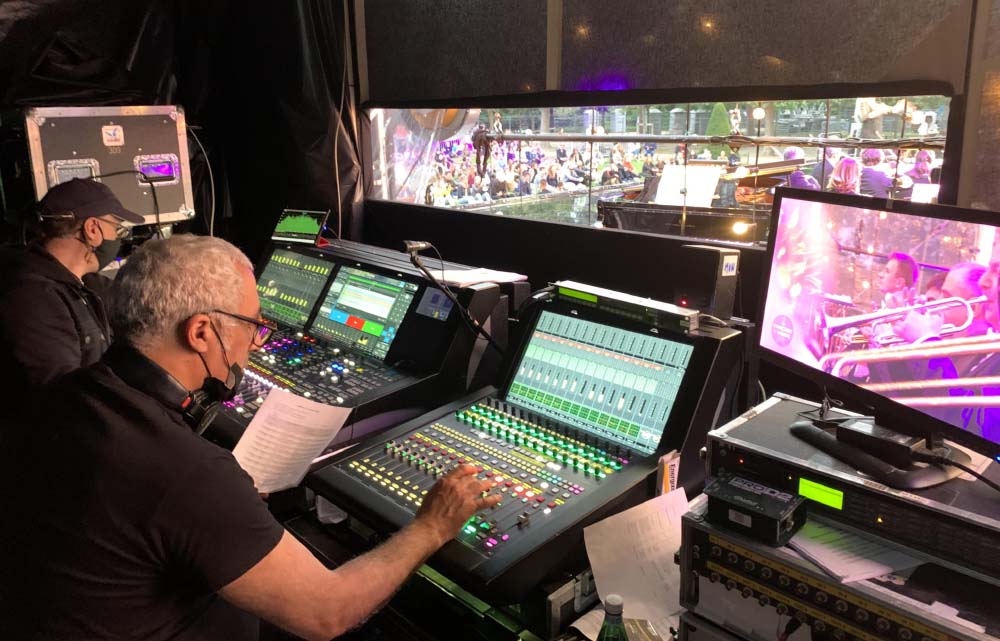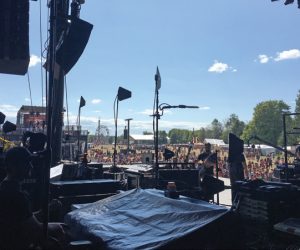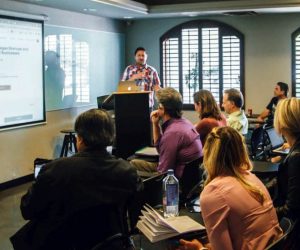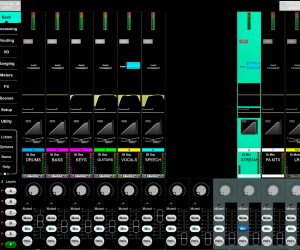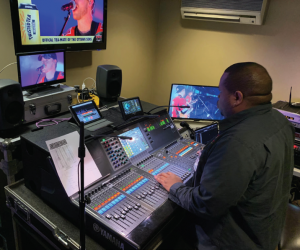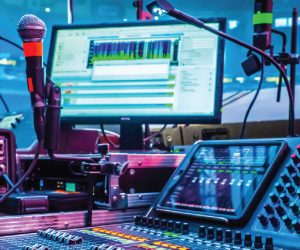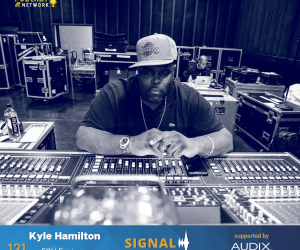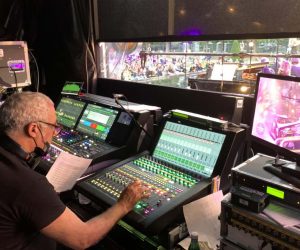I’ve been thinking a lot lately about “artistic intent” and how it applies to what we do in the craft of live event production. Specifically, now that streaming and video recorded performances are the norm (and likely to stay), I believe we must all think long and hard about the role of technology and delivering an immersive, satisfying experience to the intended audience. With the pandemic winding down in some ways (or is it?), it’s important to take stock in what has changed along with perhaps what hasn’t changed for performers and audiences.
These insights have been dawning on me over the past 15 months, mainly because up to that point, I’d largely “retired” from doing live sound, recordings, and video work in favor of just working on my music and performing for live audiences. Then when the pandemic hit, it became evident that without those things, there wouldn’t be any musical or performance outlets for me or my musician friends and colleagues.
So, I took up the cameras again, dusted off the microphones, borrowed additional microphones, figured out how to use a Sound Devices field recorder, and ended up asking friends to lend their expertise to help on some of the sessions we did. Mainly, this is about what would have been live performances but were instead recorded and presented for subscription holders as on-demand content.
In the process, I became aware of some common pitfalls in doing this kind of work. One thing that happens to most of us when we study, learn more, and practice any craft is that we get more of a critical eye and ear towards similar kinds of work.
As I spent time planning and executing the sessions, and editing and mixing the results, I started to notice that a fair amount of “professionally produced content” leaves a lot to be desired. Perhaps not from a technical standpoint, but in some cases even there. But mainly, I’m focusing on the artistic approach to capturing, mixing, editing and camerawork that we should all be aware of when working on these kinds of projects.
And I should get this out of the way first: the technology itself is better, generally easier, and far more available than it ever was before. If we, as technically-oriented folks, can’t master the gear then we’re in the wrong business. But I digress…
Cameras, Cameras Everywhere!
The biggest disconnect I’ve noticed in many of these productions has to do with which camera angle and point of view is being presented to the audience at any given moment. But it’s not just the camera angles and the video editing – it is also the sound.
Let’s start with the cameras though. These things are relatively cheap now, to the point where most anyone can throw a bunch of GoPros all over the place. Moderately priced cameras can produce beautiful 4K images, and it’s easier than ever to properly white-balance everything so the look isn’t the issue.
However, if the person or team deciding on which camera should be on the screen in the edited version at any given moment doesn’t know the music, then Houston, we have a problem. Keeping visual interest by switching between views is one thing but understanding what’s really happening on stage and helping the viewer see where the action is, or what might be interesting at any given moment, is another level. The latter brings the viewer “into” the performance, while the former is largely just “random.”
The same goes for the audio mix. Just like with a live show, the mix should always be a balance between “the whole band” and the lead lines or solos happening at any given time. The cowbell should never drown out the vocals, unless it’s that “one certain song” we all know and Christopher Walken is the producer.
Further, mixing for live streaming is much more like mixing for broadcast or even a “live” recording than it is a live show. Why? Because the audience isn’t in the room with us and can’t see and hear for themselves – they’re relying on us to do it for them. The eye/ear/brain combination has the remarkable ability to filter out distracting information and focus on the points of interest that are happening at any given moment.
But when there’s a screen separating us from the action, we largely lose that ability. Instead, the mix and video edit are there to do that for us.
Don’t Bring The Wrong Tools
Which brings me to my next point: if we don’t have the right kind of gear to do a particular job, I feel that we should either beg, borrow or steal it, or we should turn down the job. There’s probably someone else in our region that does know how to do this sort of job, and if so, we should refer it to them.
Microphones used for vocalists on live shows are not at all the same microphones used to record strings for a classical streaming project. A Sennheiser 421 is a great mic but probably isn’t the best drum overhead for a jazz session. And vice versa, too – a $1,500 Schoeps condenser mic isn’t likely to work well for the neighborhood metal screamer. How the various groups and instruments or sections are miked matters, too. If we show up without knowledge of true stereo techniques for an acoustic session, for instance, we’re not going to be delivering the best results.
I’m not talking about just knowing the difference between an X/Y and a spaced pair setup, but also about knowing where to put them. These things are not guesses – they’re well-developed techniques that have histories and specific applications. Of course, these techniques are learnable, but they shouldn’t be learned on the job while professional performers are giving their all to an empty house full of cameras.
So, as we make our way ever more into the world of streaming performances and content for online consumption, I ask that we keep in mind how different it really is than what we’re mostly used to in terms of live performances. When the show is live for an audience in the same room, many flaws go unnoticed.
But with streaming or recorded performances presented on a screen, a different sort of scrutiny is put upon our work. I know we as professionals are up to the challenge, but we’ll have to learn new skills and new approaches to get there.
Have fun, and I look forward to seeing your work!



